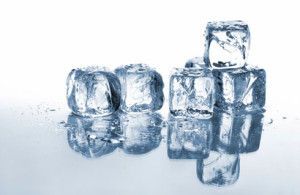We talked about the "RICE" method for injury healing last week. As we mentioned, many practitioners and trainers are no longer recommending the “RICE” method after an acute injury. Rest and ice have been part of the standard treatment for injury and soreness for so long because it helps to relieve pain, however, recent studies show these two factors may actually delay healing rather than help it.As we have discussed before, inflammation is a natural process carried out by the body to heal itself. Uncontrolled inflammation in different parts of the body can lead to other health concerns, but when it comes to inflammation after injury, the primary goal is to heal the injury. Let’s start with icing. Of course ice can help to make a person feel better, however, it also can cause congestion in the tissues and fluids around the site of an injury. The constricted vessels are unable to bring fresh oxygenated blood and nutrients in and get rid of the waste products created by the inflammatory process. Some research has also shown that the effects of ice may last for hours after the ice has been removed, causing this back up of nutrients to last even longer.Now to address rest after injury. Different injuries will require different time periods of rest after an injury. An ankle sprain versus a fracture, for example, will have a different process for healing. With a sprain injury, the resting period after injury should remain fairly short. It is important to keep the joints mobile for a few different reasons –First, the waste products created by the inflammatory process are carried in the lymphatic system. This system relies on muscle contraction to help move fluids around the body, as it does not have a built in pump system like the circulatory (blood) system does. The second reason is to prevent scar tissue formation. When soft tissue such as a ligament or tendon is injured, it does not heal back in exactly the same way as before the injury took place. Imagine a deep cut on your finger, it will eventually form a scab and form a scar on the skin which will remain there forever. The more movement that scar tissue has during healing, the better. This helps to prevent restrictions or adhesions around the injury which may lead to movement compensation down the road.So what is the best course of care? Compression and elevation are suggested to control inflammation better than the entire RICE method altogether. Using a wrap such as an Ace bandage around an injury allows the vessels to continually replenish the site of injury while keeping the swelling under control. Excess fluid is not able to build up when confined by a firm bandage.In closing, we aren’t necessarily saying to never use ice for an injury, but rather to use it for smaller amounts of time. Ice should be limited to 10 minutes every few hours, if at all. Movement and light range of motion exercises should be incorporated as soon as possible to limit any loss of function. The doctors at Optimal Chiropractic treat a wide range of sports injuries from high school athletes to the Weekend Warrior. Give our office in Post Falls, Idaho a call to see how we can help you or someone you may know.
Let’s start with icing. Of course ice can help to make a person feel better, however, it also can cause congestion in the tissues and fluids around the site of an injury. The constricted vessels are unable to bring fresh oxygenated blood and nutrients in and get rid of the waste products created by the inflammatory process. Some research has also shown that the effects of ice may last for hours after the ice has been removed, causing this back up of nutrients to last even longer.Now to address rest after injury. Different injuries will require different time periods of rest after an injury. An ankle sprain versus a fracture, for example, will have a different process for healing. With a sprain injury, the resting period after injury should remain fairly short. It is important to keep the joints mobile for a few different reasons –First, the waste products created by the inflammatory process are carried in the lymphatic system. This system relies on muscle contraction to help move fluids around the body, as it does not have a built in pump system like the circulatory (blood) system does. The second reason is to prevent scar tissue formation. When soft tissue such as a ligament or tendon is injured, it does not heal back in exactly the same way as before the injury took place. Imagine a deep cut on your finger, it will eventually form a scab and form a scar on the skin which will remain there forever. The more movement that scar tissue has during healing, the better. This helps to prevent restrictions or adhesions around the injury which may lead to movement compensation down the road.So what is the best course of care? Compression and elevation are suggested to control inflammation better than the entire RICE method altogether. Using a wrap such as an Ace bandage around an injury allows the vessels to continually replenish the site of injury while keeping the swelling under control. Excess fluid is not able to build up when confined by a firm bandage.In closing, we aren’t necessarily saying to never use ice for an injury, but rather to use it for smaller amounts of time. Ice should be limited to 10 minutes every few hours, if at all. Movement and light range of motion exercises should be incorporated as soon as possible to limit any loss of function. The doctors at Optimal Chiropractic treat a wide range of sports injuries from high school athletes to the Weekend Warrior. Give our office in Post Falls, Idaho a call to see how we can help you or someone you may know.
